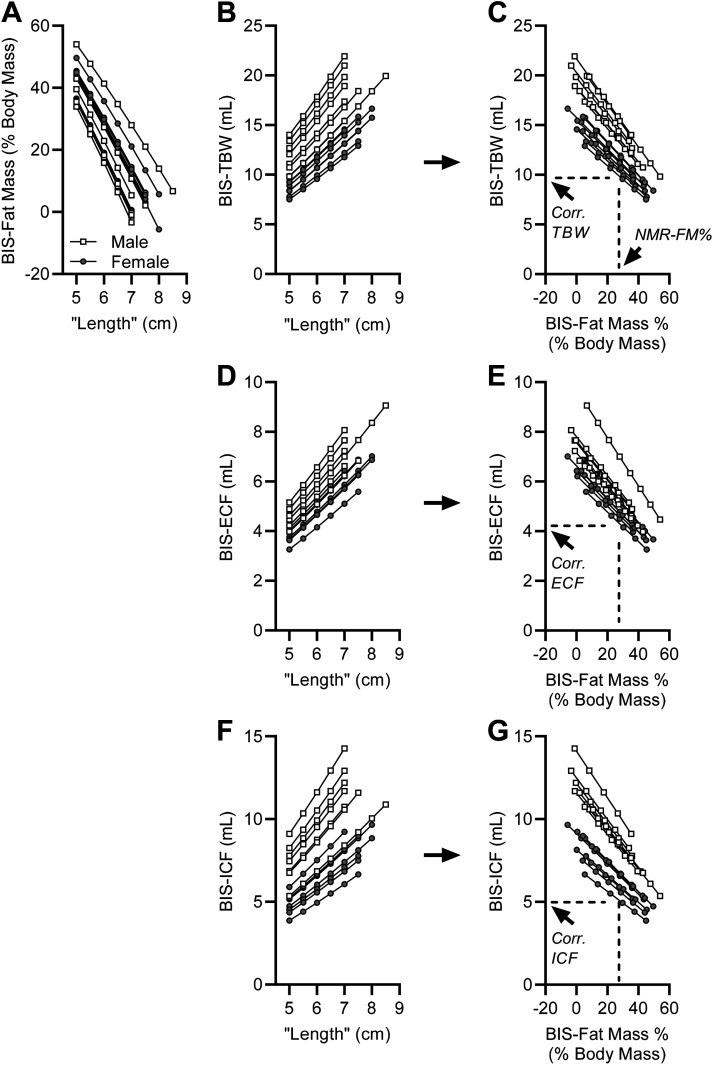Figure 2.
Illustration of linear correlations among fluid compartments and theoretical “lengths” between emitting and recording BIS electrodes, and correction of BIS-derived TBW, ECF, and ICF values using NMR-derived fat mass values. A: linear correlations between BIS-calculated fat mass and theoretical “lengths” between BIS electrodes for n = 7 male and n = 8 female nontransgenic mice backcrossed onto the C57BL/6J background strain. B: linear correlations between BIS-calculated total body water (BIS-TBW) and theoretical “lengths” between BIS electrodes. C: linear correlation between BIS-calculated TBW and fat mass. D: linear correlations between BIS-calculated extracellular fluid (BIS-ECF) and theoretical “lengths” between BIS electrodes. E: linear correlation between BIS-calculated ECF and fat mass. F: linear correlations between BIS-calculated intracellular fluid (BIS-ICF) and theoretical “lengths” between BIS electrodes. G: linear correlation between BIS-calculated ICF and fat mass. In C, E, and G, dotted lines illustrate the insertion of TD-NMR-based assessments of fat mass (NMR-FM%) to solve for corrected NMR/BIS-TBW (Corr. TBW), NMR/BIS-ECF (Corr. ECF), and NMR/BIS-ICF (Corr. ICF) on an individual animal basis. BIS, bioimpedance spectroscopy; ECF, extracellular fluid; ICF, intracellular fluid; TBW, total body water.

